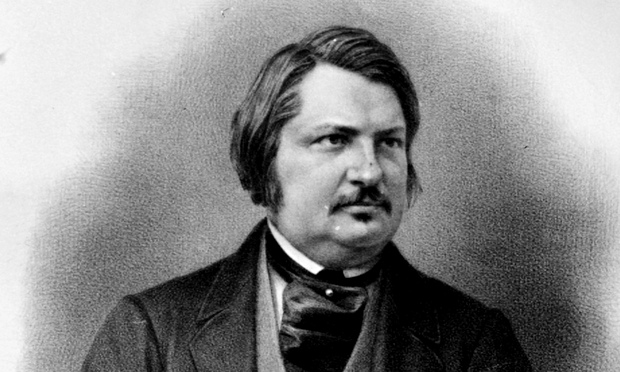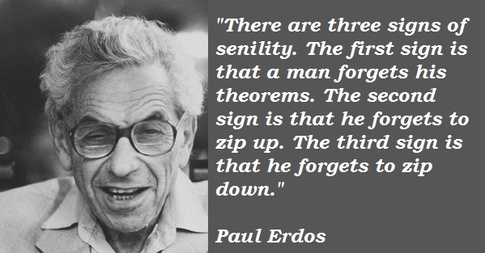I’ve always been interested in the daily schedules, routines, and habits that make people successful. Although I have a good system for planning out my days, I’m always looking to add to and improve this area of my life.
This lead me to reading a book called Daily Rituals: How Artists Work (Amazon). The author of this book, Mason Currey, began by writing a blog that chronicled the daily habits of well-known artists, writers, poets, philosophers, scientists, mathematicians and others. He then turned it into an excellent book that details the daily rituals and routines of almost 200 of these creative historical figures.
Here are some excerpts from the book that I found particularly funny or interesting.
Honoré de Balzac (1799-1850)

Balzac drove himself relentlessly as a writer, motivated by enormous literary ambition as well as a never-ending string of creditors and endless cups of coffee; as Herbert J. Hunt has written, he engaged in “orgies of work punctuated by orgies of relaxation and pleasure.”
When Balzac was working, his writing schedule was brutal: He ate a light dinner at 6:00 P.M., then went to bed. At 1:00 A.M. he rose and sat down at his writing table for a seven-hour stretch of work. At 8:00 A.M. he allowed himself a ninety-minute nap; then, from 9:30 to 4:00, he resumed work, drinking cup after cup of black coffee. (According to one estimate, he drank as many as fifty cups a day.)
At 4:00 P.M. Balzac took a walk, had a bath, and received visitors until 6:00, when the cycle started all over again. “The days melt in my hands like ice in the sun,” he wrote in 1830. “I’m not living, I’m wearing myself out in a horrible fashion—but whether I die of work or something else, it’s all the same.”
Here’s Balzac describing the effects of coffee on writing (I would be inclined to agree):
“Coffee glides into one’s stomach and sets all of one’s mental processes in motion. One’s ideas advance in column of route like battalions of the Grande Armée. Memories come up at the double, bearing the standards which will lead the troops into battle. The light cavalry deploys at the gallop. The artillery of logic thunders along with its supply wagons and shells. Brilliant notions join in the combat as sharpshooters. The characters don their costumes, the paper is covered with ink, the battle has started, and ends with an outpouring of black fluid like a real battlefield enveloped in swaths of black smoke from the expended gunpowder. Were it not for coffee one could not write, which is to say one could not live.”
Haruki Murakami: the origins of “Monk Mode”?
When he is writing a novel, Murakami wakes at 4:00 A.M. and works for five to six hours straight. In the afternoons he runs or swims (or does both), runs errands, reads, and listens to music; bedtime is 9:00. “I keep to this routine every day without variation,” he told The Paris Review in 2004. “The repetition itself becomes the important thing; it’s a form of mesmerism. I mesmerize myself to reach a deeper state of mind.”
Murakami has said that maintaining this repetition for the time required to complete a novel takes more than mental discipline: “Physical strength is as necessary as artistic sensitivity.” When he first hung out his shingle as a professional writer, in 1981, after several years running a small jazz club in Tokyo, he discovered that the sedentary lifestyle caused him to gain weight rapidly; he was also smoking as many as sixty cigarettes a day.

He soon resolved to change his habits completely, moving with his wife to a rural area, quitting smoking, drinking less, and eating a diet of mostly vegetables and fish. He also started running daily, a habit he has kept up for more than a quarter century.
The one drawback to this self-made schedule, Murakami admitted in a 2008 essay, is that it doesn’t allow for much of a social life. “People are offended when you repeatedly turn down their invitations,” he wrote. But he decided that the indispensable relationship in his life was with his readers. “My readers would welcome whatever life style I chose, as long as I made sure each new work was an improvement over the last. And shouldn’t that be my duty—and my top priority—as a novelist?”
Soren Kierkegaard’s strange coffee ritual
…Kierkegaard kept up his energy with coffee, usually taken after supper and a glass of sherry. Israel Levin, his secretary from 1844 until 1850, recalled that Kierkegaard owned “at least fifty sets of cups and saucers, but only one of each sort”—and that, before coffee could be served, Levin had to select which cup and saucer he preferred that day, and then, bizarrely, justify his choice to Kierkegaard. And this was not the end of the strange ritual. The biographer Joakim Garff writes:
Kierkegaard had his own quite peculiar way of having coffee: Delightedly he seized hold of the bag containing the sugar and poured sugar into the coffee cup until it was piled up above the rim. Next came the incredibly strong, black coffee, which slowly dissolved the white pyramid. The process was scarcely finished before the syrupy stimulant disappeared into the magister’s stomach, where it mingled with the sherry to produce additional energy that percolated up into his seething and bubbling brain—which in any case had already been so productive all day that in the half-light Levin could still notice the tingling and throbbing in the overworked fingers when they grasped the slender handle of the cup.
Eccentric mathematician Paul Erdos

Erdos liked to work in short, intense collaborations with other mathematicians, and he crisscrossed the globe seeking fresh talent, often camping out in colleague’s homes while they worked on a problem together. One such colleague remembered an Erdos visit from the 1970s:
… he needed only three hours of sleep. He’d get up early and write letters, mathematical letters. He’d sleep downstairs. The first time he stayed, the clock was set wrong. It said 7:00, but it was really 4:30 AM. He thought we should be up working, so he turned on the TV full blast. Later, when he knew me better, he’d come up at some early hour and tap on the bedroom door. “Ralph, do you exist?” The pace was grueling. He’d want to work from 8:00 A.M. until 1:30 A.M. Sure we’d break for short meals but we’d write on napkins and talk math the whole time. He’d stay a week or two and you’d collapse at the end.
Erdos owed his phenomenal stamina to amphetamines—he took ten to twenty milligrams of Benzedrine or Ritalin daily. Worried about his drug use, a friend once bet Erdos that he wouldn’t be able to give up amphetamines for a month. Erdos took the bet and succeeded in going cold turkey for thirty days. When he came to collect his money, he told his friend, “You’ve showed me I’m not an addict. But I didn’t get any work done. I’d get up in the morning and stare at a blank piece of paper. I’d have no ideas, just like an ordinary person. You’ve set mathematics back a month.” After the bet, Erdos promptly resumed his amphetamine habit, which he supplemented with shots of strong espresso and caffeine tablets. “A mathematician,” he liked to say, “is a machine for turning coffee into theorems.”
Writing advice from Morton Feldman
When he did find the time to compose, Feldman employed a strategy that John Cage taught him—it was “the most important advice anybody ever gave me,” Feldman told a lecture audience in 1984. “He said that it’s a very good idea that after you write a little bit, stop and then copy it. Because while you’re copying it, you’re thinking about it, and it’s giving you other ideas. And that’s the way I work. And it’s marvelous, just wonderful, the relationship between working and copying.”
External conditions—having the right pen, a good chair—were important, too. Feldman wrote in a 1965 essay, “My concern at times is nothing more than establishing a series of practical considerations that will enable me to work. For years I said if I could only find a comfortable chair I would rival Mozart.”
Again all of these are taken from the book Daily Rituals: How Artists Work
My own daily schedule is nothing too eccentric or crazy, and it usually looks something like this:
- Basic morning routine
- Work at one of the many cafes in Chiang Mai
- Eat lunch, either brought from home or eat out
- More work at a different cafe or coworking space
- Gym (or stretch on rest days)
- Dinner
- Chill out time and “maintenance” habits in the evening
- Meditate
- Sleep
That’s probably what about ~80% of my days look like, of course with some variation. And it’s working pretty well for me so far, although like I said, I’m always open to improvement.
What’s your own daily routine like? Do you find this kind of thing as interesting as I do… and do you consume as much caffeine as some of these guys? Post a comment below and let us know what you think.